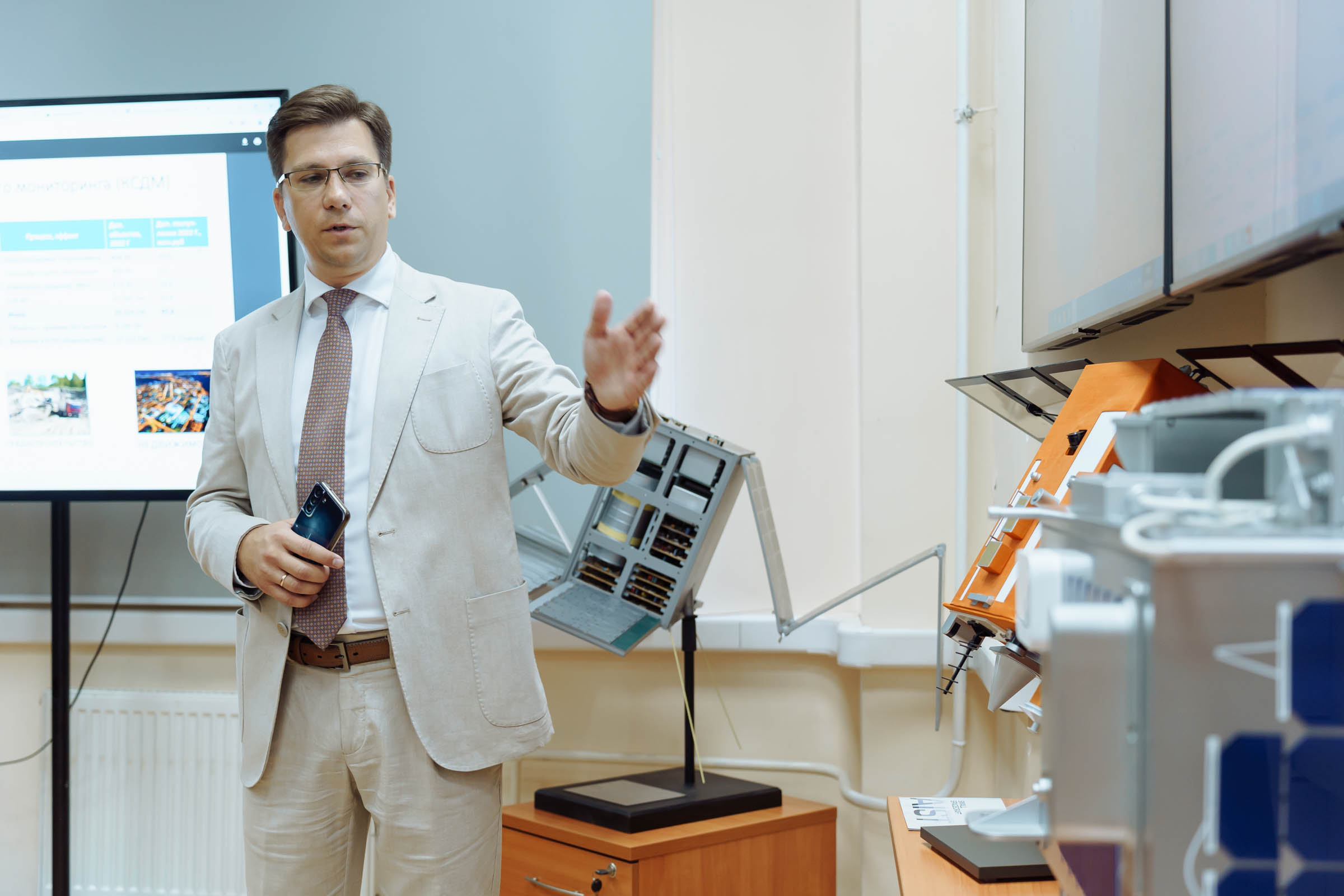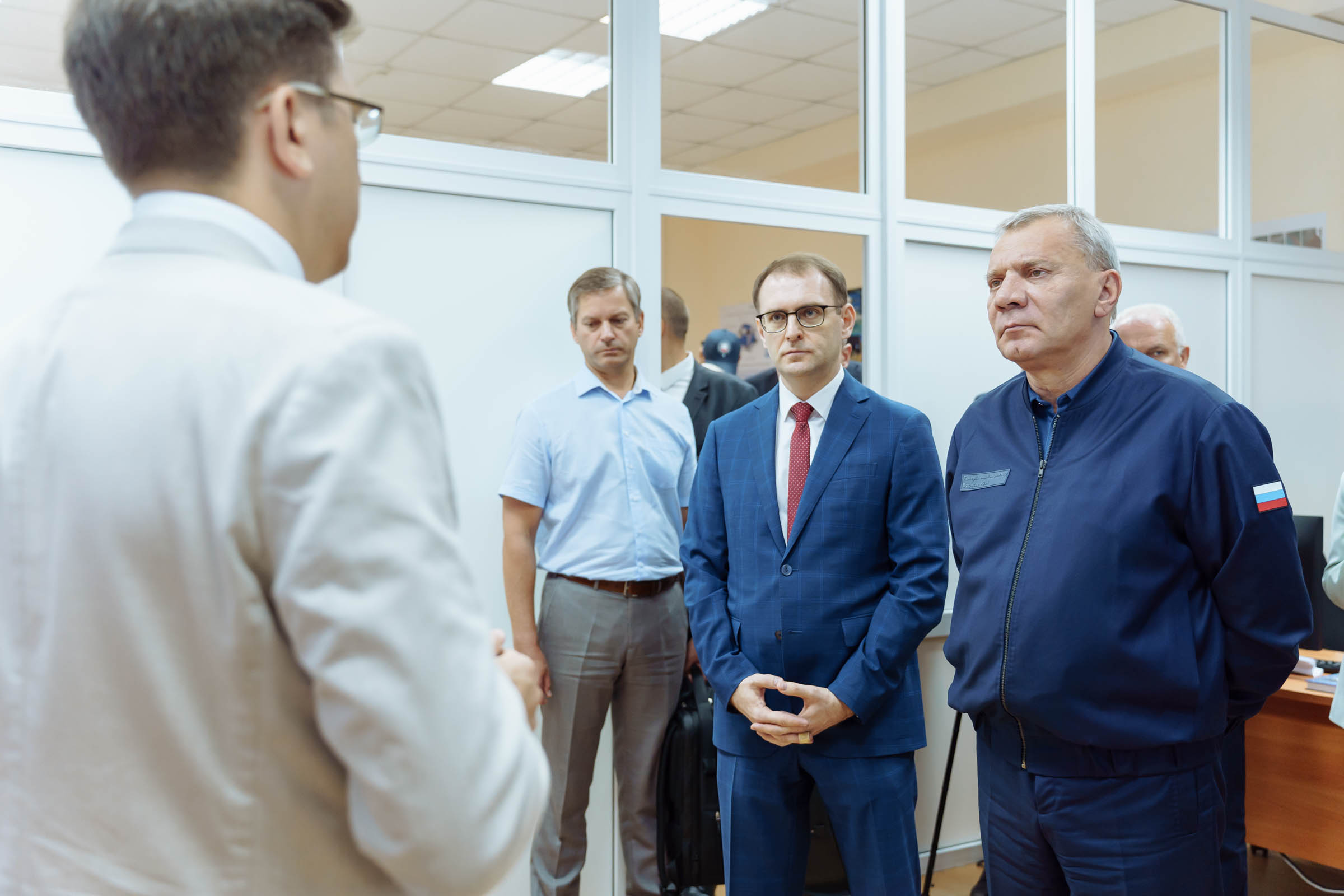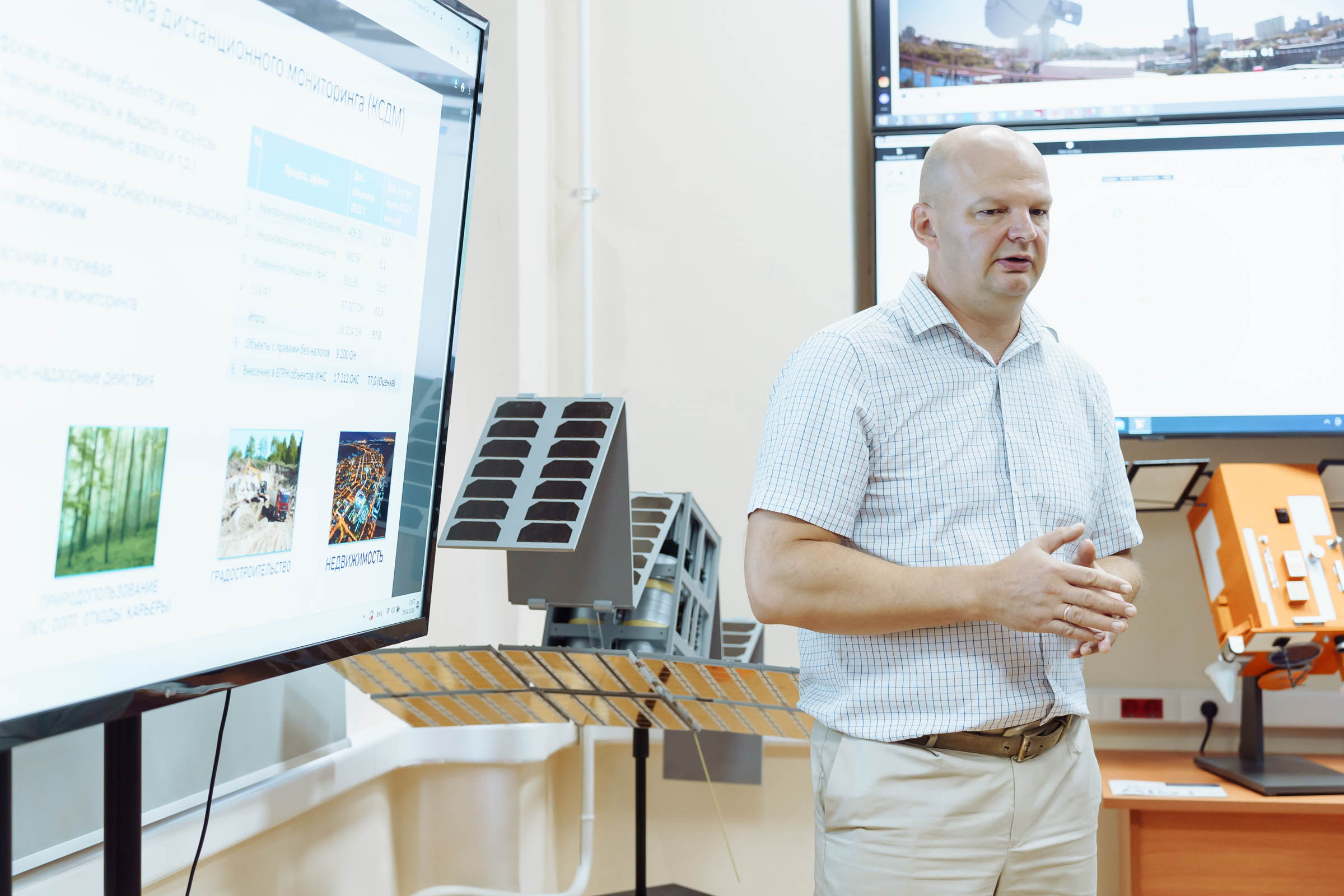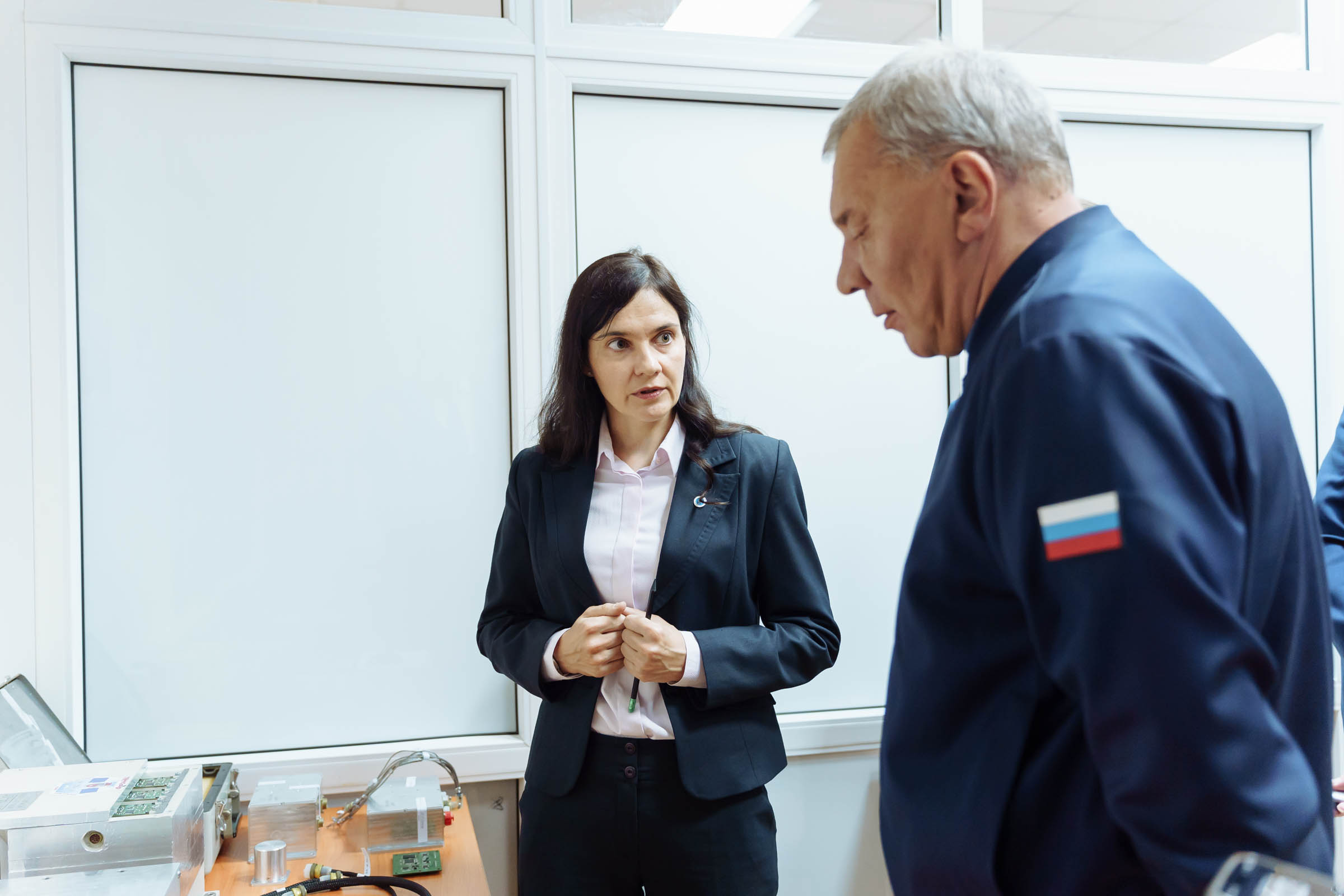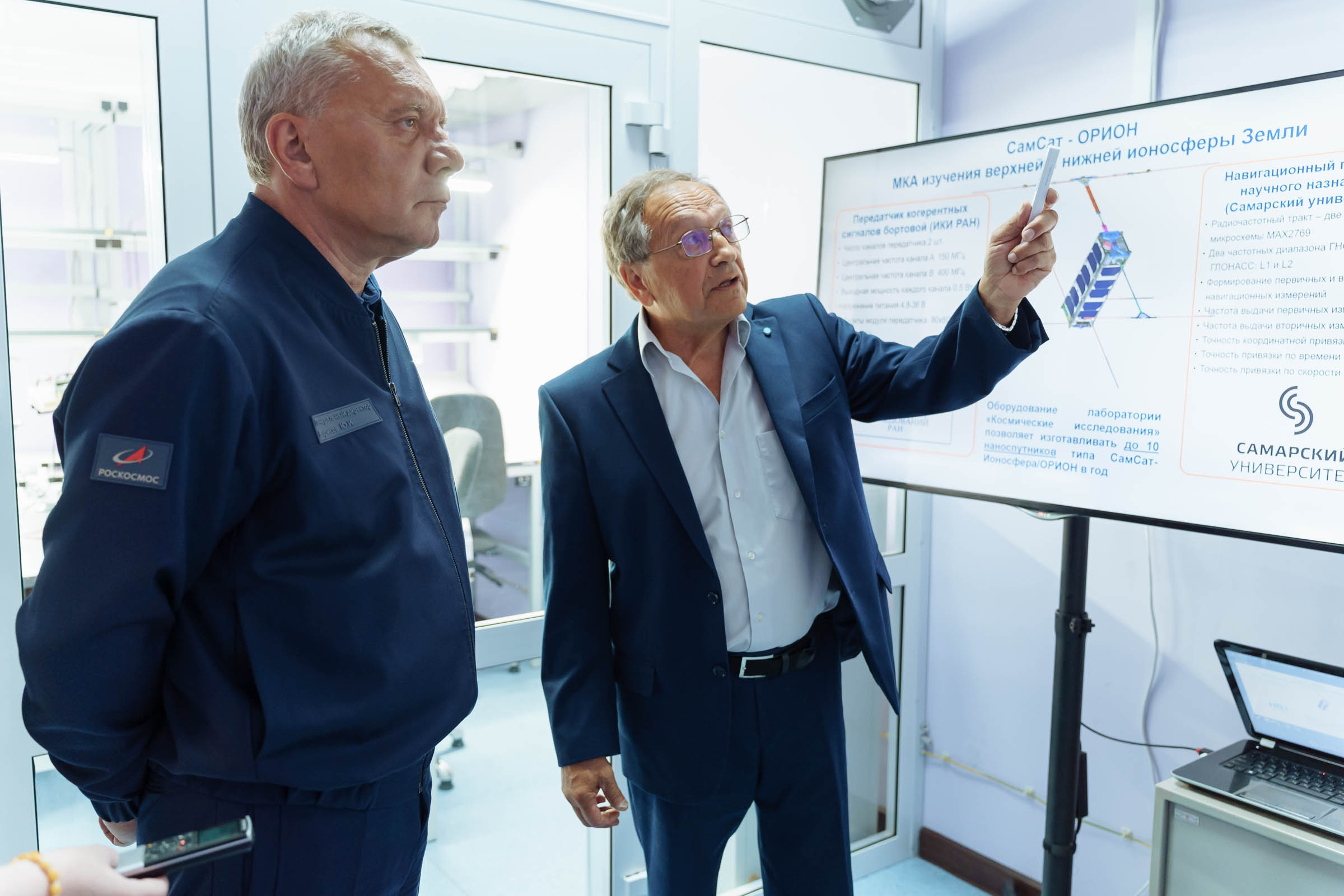Yuri Borisov, General Director of the “Roscosmos” State Corporation, paid a working visit to Samara National Research University. Here he got acquainted with the work of R&D centres and laboratories engaged in designing space technology and geoinformation systems.
In particular, the head of the State Corporation visited the Centre for Receiving and Processing Space Information, where students, postgraduate students and young scientists monitor movement twenty-four hours, receive and process telemetry and target information received from small spacecraft (SSC), including the SSC “AIST,” created by the University’s students and specialists, together with employees of the RCC “Progress" and private commercial companies.
Ivan Tkachenko, Director of the University’s Institute of Aerospace Engineering and Advanced Aerospace Engineering School, told Yuri Borisov about the work of the first SSC “AIST” and the new line of these devices.
The head of the “Roscosmos” State Corporation was interested in the SSC “AIST-2T” produced by the RCC “Progress,” designed for stereoscopic photography, and the “AIST-ST” spacecraft, a 12-unit nanosatellite equipped with the radar for monitoring the Earth surface. “AIST-ST” is being created by Samara scientists, together with specialists of the company “Special Technology Centre” from St. Petersburg. Yuri Borisov asked about resolution of the devices.
The head of the State Corporation also appreciated activities of the University’s R&D Laboratory of Geoinformatics and Information Security, where geoinformation systems for the work of authorities and enterprises, based on intelligent processing of remote sensing data, are being developed and implemented.
Andrey Chernov, a senior researcher at the R&D Laboratory, said that one of the developments — the integrated remote monitoring system — includes over 10 subsystems in the field of agriculture, environmental management, real estate, urban planning, and is used for work by more than 500 users of federal, regional and local governments. Monitoring in these fields brings to the regional budget over 90 million rubles of tax revenue per year. Having listened to Andrey Chernov’s report, Yuri Borisov suggested that he should find a format of cooperation, for the purpose of consolidating permanent interaction with “Roscosmos.”
During the visit, Yuri Borisov also got acquainted with devices to be installed on various operating spacecrafts, which have been manufactured in the University’s laboratories.
The head of “Roscosmos” was also shown the hyperspectrometer, one of the leading developments of the scientific school of Victor Soifer, Academician of the Russian Academy of Sciences, President of the University. One of these devices, the hyperspectrometer for CubeSat nanosatellites, developed by scientists from the University and the Institute of Image Processing Systems of the Russian Academy of Sciences, has already successfully passed flight tests in outer space, confirming operability of the innovative design. In 2024, a 6-unit cubesat equipped with the hyperspectrometer is scheduled to be jointly launched by the University and the private company “Sputnix.”
Yuri Borisov paid special attention to the work of the Youth Laboratory “Advanced Fundamental and Applied Space Research based on Nanosatellites,” specialists of which develop on-board systems and the nanosatellite platform using innovative solutions for fundamental and applied experiments in outer space. Igor Belokonov, Head of the Inter-university Department of Space Research, stressed that the Laboratory implements the full technological process of creating nanosatellites and can make up to 10 nanosatellites per year. He also told about the nanosatellite “SamSat-IONOSPHERE” intended for monitoring the condition of the Earth’s ionosphere and magnetosphere, which is being prepared to be launched, and about a unique stand developed in the Laboratory, for the purpose of detecting inertial parameters and finding the position of the center of mass of nanosatellites.
Yuri Borisov’s visit ended with attending the robotic site for assembling SSCs at the premise of the cyber-physical factory of the University’s Advanced Aerospace Engineering School.
Following the visit results, Yuri Borisov, Head of the “Roscosmos” State Corporation, and Vladimir Bogatyrev, Rector of the University, discussed cooperation in the field of creating, testing and producing small spacecrafts and nanosatellites, as well as developing geoinformation technologies.
 RU
RU  EN
EN  CN
CN  ES
ES 
